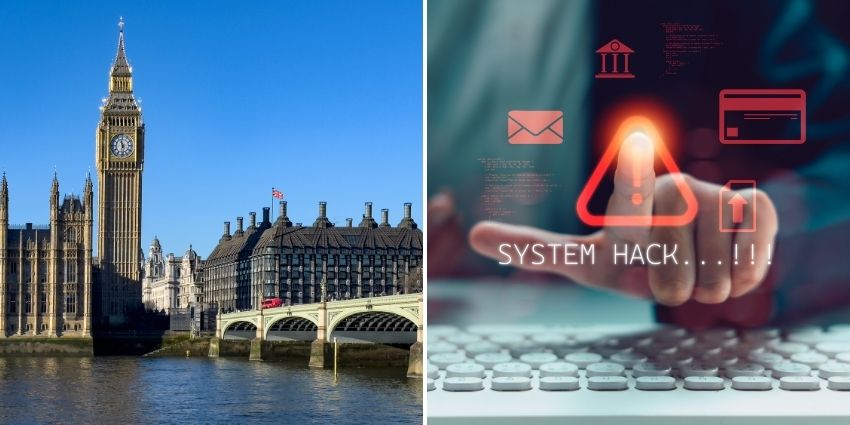In a shocking security lapse, senior officials of the Trump administration inadvertently included Jeffrey Goldberg, editor-in-chief of The Atlantic, in a Signal group chat named “Houthi PC small group”.
This chat was used to discuss top-secret military plans for airstrikes on Iran-backed Houthi rebels in Yemen. The group comprised high-ranking administration officials such as Vice President JD Vance, Defense Secretary Pete Hegseth, and National Security Adviser Mike Waltz.
Upon realising the sensitive nature of the information, Goldberg reported the incident, which has since sparked widespread alarm over the administration’s communication protocols and the all-too-real compromise of national security.
This incident illustrates several critical vulnerabilities in enterprise communications, particularly within high-risk and highly regulated industries like government and finance.
The Critical Vulnerabilities Highlighted by the Incident
Reliance on Non-Government Approved Communication Platforms
The use of Signal, a commercial encrypted messaging app not sanctioned for classified discussions, raises striking questions about the appropriateness of such platforms for sensitive communications. While Signal offers end-to-end encryption, its deployment for top-secret conversations without official approval reflects a severe lapse in adhering to established security protocols.
“In no world should federal employees be discussing matters such as war plans on a consumer-grade messaging app, likely on personal devices, too,” said Anurag Lal, CEO of NetSfere and former White House Director of the US National Broadband Taskforce. “There has to be a level of respect for security amongst government employees and a standard set that requires classified communications to be handled on completely secure, encrypted and compliant platforms.”
Inadequate Verification Processes
The accidental inclusion of a journalist in a confidential group chat highlights a failure in participant verification. Robust procedures are absolutely essential to ensure that only authorised individuals have access to sensitive discussions. The absence of strict verification mechanisms can lead to unauthorised disclosures, as this case encapsulates.
Potential Legal and Regulatory Repercussions
Sharing classified information on unsecured platforms can violate laws governing the handling of sensitive data. Democratic lawmakers have called for investigations into potential breaches of national security protocols, emphasising the legal fallout of such prominent lapses.
Risk of Erosion of Trust Among Allies and Partners
Such security breaches can undermine the confidence of international allies in an organisation’s ability to safeguard shared intelligence. This erosion of trust can have far-reaching diplomatic and operational consequences, undermining collaborative efforts and information sharing.
Complacency Around Training and Awareness
The incident highlights the lack of proper training programs and procedures centred around secure communication practices and the viable risks associated with digital platforms. Regular awareness initiatives might have assisted in preventing such an error and significant security breach.
“This incident underscores a critical failure in secure communication practices at the highest levels of government,” Lal added. “It’s a stark reminder that even top officials can make mistakes that jeopardise national security.”
Lessons for IT and UC Leaders in High-Risk Organisations
While dismissing this incident as a high-profile farce might be easy, the White House Signal leak offers invaluable insights for IT and UC leaders operating within high-risk sectors.
Prioritise Approved Communication Platforms
Leaders should ensure that all sensitive comms occur over platforms explicitly approved for handling classified or confidential information. While applications like Signal provide robust encryption, they may lack the necessary certifications for certain data classifications. Implementing and enforcing policies that mandate the use of sanctioned tools can mitigate unauthorised data exposure.
“To truly safeguard both government officials and sensitive data, leaders must move beyond consumer-grade apps and embrace purpose-built, secure, and IT-managed communication solutions—ensuring ironclad security, controlled access, and absolute protection against breaches that threaten national security,” Lal suggested.
“This should be the expectation for all government entities,” Lal continued. “Using a consumer-made app is a naive mistake and clearly opens the door to a lot of vulnerabilities. Even though Signal is end-to-end encrypted, it lacks a level of security that requires user authentication and administrative control to protect the data and its users.”
Implement Rigorous Access Controls
Leaders can develop stringent protocols for adding participants to communication channels. Utilise multi-factor authentication and role-based access controls to verify identities before granting access. Regular audits of group memberships can further ensure that only authorised personnel are included in sensitive discussions.
Conduct Regular Security Training
Leaders should institute ongoing education programs focusing on secure communication practices and the potential risks associated with digital platforms. Training should cover topics such as the proper use of approved tools, recognition of phishing attempts, and adherence to organisational protocols.
Establish Clear Incident Response Plans
Leaders can establish and regularly update incident response strategies tailored to comms breaches. These plans should encompass immediate actions, notification procedures, and mitigation steps to contain and address unauthorised disclosures smoothly and swiftly.
Foster a Culture of Security Awareness
Finally, leaders should cultivate a proactive security mindset across all levels of the organisation. They should promote open communication about potential vulnerabilities and empower employees to report suspicious activities without fear of reprisal.
By adopting and executing on these measures, IT and UC leaders can bolster the resilience of their communication systems, ensuring the protection of sensitive information in high-stakes environments.







